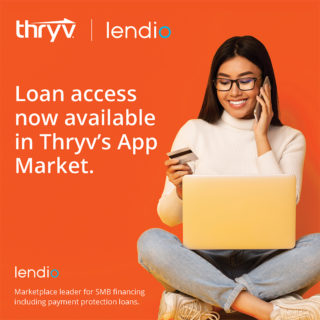With 78% of businesses losing revenue due to the pandemic, many sought additional funding in the form of business loans.
As we emerge from the chaos caused by the last two years, business owners are now asking important questions: How do these loans work now? Can I still apply? And, what do I have to pay back?
91% of employer businesses said they sought emergency assistance funding.
Let’s look at the four most common COVID-19 loans and break it all down.
COVID Economic Injury Disaster Loan (EIDL)
The Economic Injury Disaster Loan is a federal program designed to support small businesses recover from the economic impacts of the pandemic. Its purpose is to supply accessible, borrower-friendly capital.

As a result, this is a low-interest, fixed-rate, long-term loan. It has a maximum loan amount of $2 million which is an increase from the previous max amount of $500,000.
This loan covers the following operating expenses:
- Payroll
- Rent or mortgage
- Utilities
- Other business expenses
- To pay the business debt (past, present or future)
The program ends on December 31, 2021, or when the funds run out. To complete a COVID EIDL loan application, click here. Or, if you’ve already applied for an EIDL loan and would like to apply for an increase, click here.
SBA Debt Relief
When businesses were forced to shut their doors prior to the digital shift, money wasn’t coming in. Business owners were left unsure how they would keep up with their SBA loan payments.
Others, who were considering taking out an SBA loan to assist their business, weren’t sure what they would do to repay the financing if their business didn’t bounce back post-COVID. That’s when the SBA’s Debt Relief program came into play.
Established by the CARES Act, the program provides relief to small businesses with non-disaster SBA loans such as the 7(a), 504, and Microloans disbursed before Sept. 27, 2020. This particular relief pays the principal, interest and fees for six months was only offered to certain businesses.
Need more details? Click here for the complete guide to COVID-19 Relief legislation.
Shuttered Venue Operators Grant (SVOG)
As theaters, museums and event venues lowered the curtains, they turned to the Shuttered Venue Operators Grant for assistance. Also dubbed the SOS or Save Our Stages grant, this financing covers:
- Payroll costs
- Rent or mortgage
- Utilities
- Payments to independent contractors
- Maintenance, licensing fees, taxes, operating leases, insurance policies, advertising, production transportation and other business expenses
- Worker protection equipment
Because this is a grant, recipients aren’t required to pay back any of the funding as long as the funds are used toward the above expenses no later than March 11, 2023.
For more information on the applicant user guide or frequently asked questions regarding the SOS Grant, click here.
The Paycheck Protection Program (PPP)
The Paycheck Protection Program is an SBA-backed loan designed to keep people working during the pandemic. You can no longer apply for this loan as it ended May 31, 2021. But, existing borrowers may be eligible for PPP loan forgiveness.
82% of employer businesses applied for a PPP loan making it the most popular financing program.
According to the SBA, you can apply for loan forgiveness once you’ve spent all the loan proceeds. Borrowers can apply for loan forgiveness any time up to the maturity date of their loan.
As stated on the SBA website, “If borrowers do not apply for forgiveness within 10 months after the last day of the covered period, then PPP loan payments are no longer deferred, and borrowers will begin making loan payments to their PPP lender.”
For more information on how to apply for loan forgiveness, click here.
To determine if you are eligible for multiple SBA COVID-19 relief options you can reference the cross-program eligibility chart.
Additional Small Business Funding Options
Small business loans, COVID or otherwise, help companies cover the cost of doing business. The best loan type for your small business will depend on the amount you wish to borrow, how quickly you need it and what you plan on using the money for. (Visit our friends at Lendio for assistance.)
In addition to the SBA backed small business loans listed above, businesses may consider these additional forms of funding:
- Term Loans. A lump sum of capital that is paid back with regular payments at a fixed interest rate.
- Lines of Credit. An account that lets you borrow money when you need it up to a specified borrowing limit.
- Invoice Financing. Also known as receivables financing or invoice trading. Allows businesses to borrow money against the amounts due from customers.
- Invoice Factoring. A type of invoice finance where a business owner “sells” outstanding invoices to a third party to improve cash flow.
Before making the decision to take on a small business loan it is important that you understand how money is currently flowing in and out of your business. Learn more about how to properly manage your cash flow in our cash flow basics blog.


